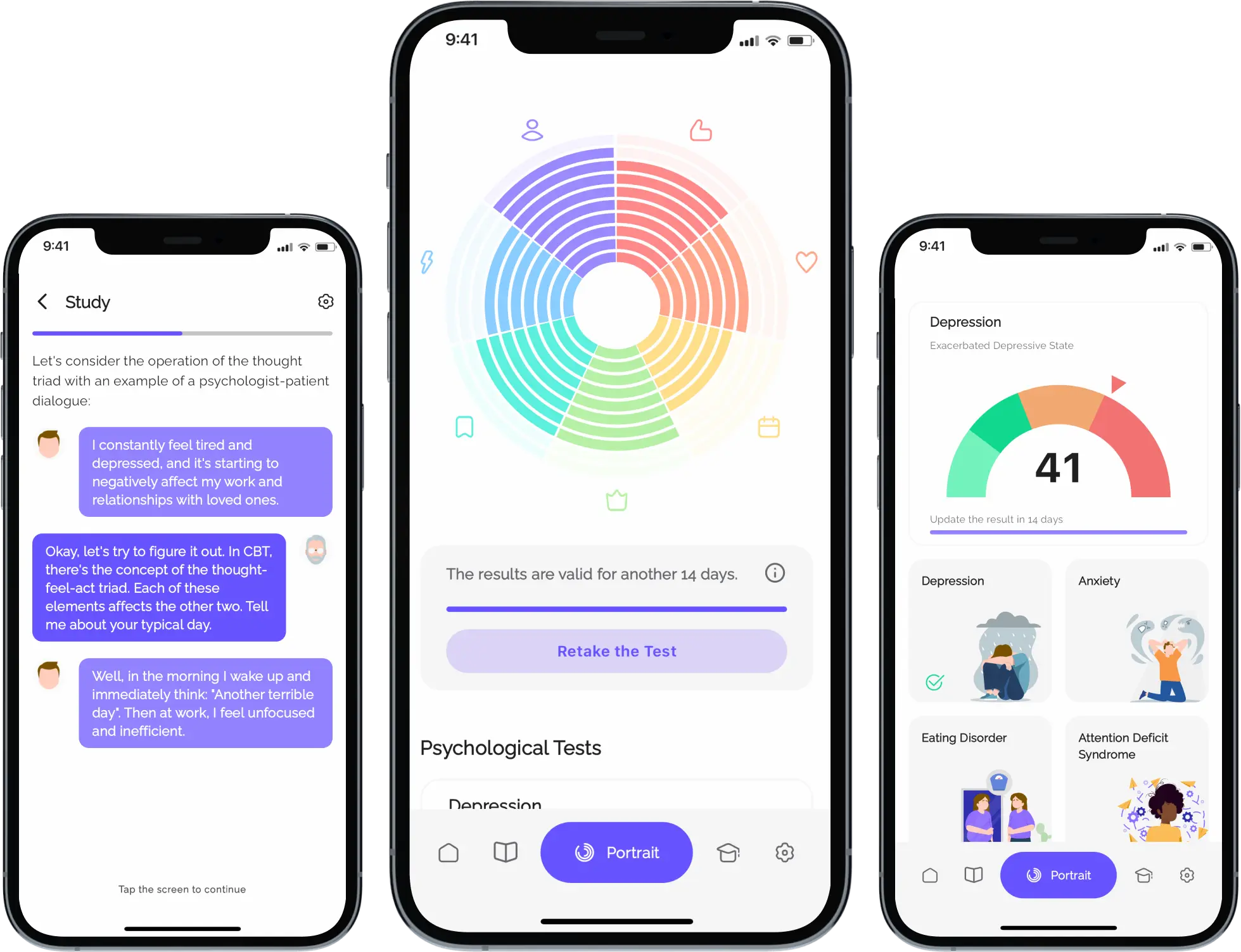
You might be wondering if we should simply force ourselves to always think positively — in other words, ignore real problems, shut out the world, and tell ourselves, “Everything’s fine, everything’s wonderful.”
Absolutely not!
CBT is about as similar to positive thinking as a computer mouse is to an actual mouse.
Let’s take a closer look: both concepts share the idea that our perception affects our emotions and our lives. However, that’s where the similarity ends.
The key principle of positive thinking is to think positively, while the key principle of CBT is to think rationally and adaptively.
See the difference?
More content in our app
You're only seeing a portion of the content. In the app, you'll find numerous interactive articles. Additionally, there are psychological tests to track your mood dynamics, a daily planner, an automatic thought journal, and much more!

Positive thinking relies on staying optimistic despite adversity, believing wholeheartedly that everything will turn out for the best.
Cognitive-behavioral therapy focuses on identifying and correcting cognitive distortions (unhelpful thoughts and beliefs), and then changing behavior accordingly.
If you’re still unsure about the difference, here’s a clearer explanation: positive thinking pushes us to look for the bright side in any situation. While that can be useful, it becomes problematic if used in a rigid, one-size-fits-all way.
The reality is that the world contains plenty of unpleasant, even terrible things, right? Pain, sadness, failures, and disappointments also exist in our lives. They’re impossible to avoid entirely.
So, if you replace every negative thought with a positive one, you’re effectively shutting out reality. That’s more of a disservice than a solution.
Positive thinking lets you do everything wrong, while believing you’re doing it right.
Steven Friesen
Here’s an example:
Let’s say something unpleasant happens in your life—perhaps you lost your job, got sick, or went through a tough breakup.
From a positive-thinking standpoint, you might replace your negative thoughts with upbeat, optimistic ones, telling yourself, “Don’t dwell on the bad—everything will be just fine!”
In CBT, however, you’d first note your negative thoughts, check them against reality, look for evidence that supports or refutes them, and only then replace them with more balanced, adaptive ideas.
You might think, for example: “I can’t say for sure everything will turn out perfectly, but I also can’t say it will all go wrong. At least three outcomes are possible: the worst, the best, or something in between. I can plan for each one—prepare for the worst, and hope for the best.”
There’s a clear difference in the approach, isn’t there?
Being able to consider negative thoughts through the lens of three possible outcomes is a powerful technique, and we’ll devote the next chapter to it!
By examining events from multiple angles, avoiding black-and-white thinking, and making our thoughts more rational (rather than simply “positive”), we can more easily handle our emotions and problems.







